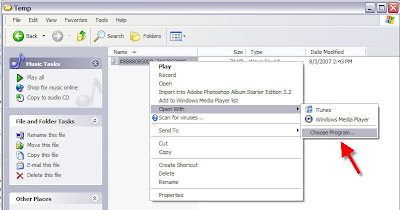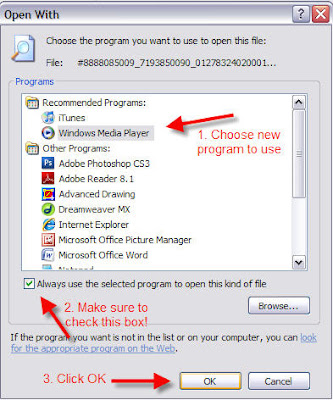I’ve been blogging now for about 2 years, and I’m amazed at the amount of traffic that I get from my blog and the number of people who tell me that they first heard about me from my blog instead of my website. The word blog is derived from the term “web log”, or an online diary or journal. If the HBO series Sex and the City were being filmed today, Carrie Bradshaw would be a blogger as well as a columnist, I think. Why? As she experiences her revelations about life, love, and relationships, she could post them to her blog for the world to see and comment upon.
Blogging has opened website creation to almost everyone, as it takes very little know-how to get a blog up and running. In fact, many service business owners are using a blog platform as their primary website, with some of them creating static pages as you would find on a traditional website, while others are using the platform as a blog and are posting updates regularly.
There are several advantages to using blogs instead of ezines or traditional websites:
1. Search engines love blogs. The strategy that seems to be attractive to search engines today is regularly updated content. I can log-in to my blog at the beginning of a day and submit a post. Within 24 hours I’ll get a notification from my Google alerts account that Google has indexed that post.
2. Content can be distributed quickly. If you instruct your visitors to subscribe to your blog via updating services like Bloglines or Feedblitz, they’ll be notified within hours of any new posts on your blog.
3. Little web programming knowledge is required. Once your blog is set up, it’s simply a matter of logging into your account, typing the info for you post, adding graphics or photos as needed, and publishing your post to your blog.
4. Reader feedback. Your readers can give you comments and feedback about your posts almost immediately after you log an entry. Blogs are a great way to engage your audience.
Are ezines and traditional websites dead? No, because people consume information differently. Some are auditory learners and prefer to hear the info (great audience for podcasting, an audio form of blogging), some prefer to receive updates as they are published (blog readers), while others like a stable, stationary medium to which they can refer when they’re ready (readers who archive ezines or bookmark web pages).
How do you begin to blog? Here are 10 simple steps you can follow:
1. Blogging platform. The easiest way to get started is to use the free service found at Blogger.com or Wordpress.com. The ability to customize your blog is limited with the free services, so I urge my clients to subscribe to Typepad.com, which will host your blog for you on their servers, or purchase a hosting account where WordPress can be installed. The downloadable version of WordPress is located at Wordpress.org and is free of charge if you need to install Wordpress yourself on your hosting account. I use Typepad for my blog, so many of my examples will relate exclusively to blogs hosted on that platform.
2. Name. What do you want to call your blog? Blog names tend to be attention-getting and off-beat. However, for service businesses, I encourage my clients to use keywords important to their business when naming their blog. You will also want to acquire the .com version of your blog’s name or your blog’s name with the word “blog” attach as your blog URL. After you have set up your blog, your blog provider can give you more info about how to map your domain to your blog. (Note: You don’t want to simply forward your blog to your domain name, as that impacts the URLs of your individual blog pages).
3. Look and Layout. How many columns do you want to display? Do you want links to static pages? What colors do you want to use? How about a signup box for a free giveaway? Should you use one of the templates provided or have something custom designed? Do you want your blog archives displayed? Do you want to be the only author or do you want to permit others to make posts, as well? There are many questions you’ll be asked in the startup phase about the look of your blog. A Typepad blog permits you to change your mind about your layout at a later date. The best way to determine the look of your blog is to look at the layout of other blogs and determine what appeals to you.
4. Widgets. There are a number of widgets, or add-on programs, that you can incorporate into your blog. Check your blog software’s site for more info about what features you’d like add to your blog. At a minimum you’ll want to give visitors a couple of ways in which they can receive blog updates through various updaters, or feeder services, as mentioned earlier.
5. Comments. The newest sp*am making its rounds online is comment sp*am. Don’t these guys have anything better to do? Set your comments to moderated, which means that you have to approve any comments to your blog before the post goes live. You’ll save yourself a great many headaches and time by choosing to moderate the comments.
Once you’ve gotten this far, you should have a basic blog established and are ready to begin to blog.
6. Blog content. The time has arrived — your blog is ready to accept posts. What do you write about? You can post content rich articles of interest to your target market, comment on a current event, answer questions from your visitors, present a before and after case study outlining how your business helped someone, etc. Keep your eyes and ears open for information relevant to your audience. I use my blog to bring forth info that doesn’t fit well into my newsletter format or something that arises between newsletter issues. I post my ezine content to my blog, as well.
7. Posting frequency. Blogs are just like gardens — they need watering regularly and require some care and attention. For maximum effectiveness, you need to post several times a week to your blog. I try and post 4 times per week in my blog — 2 posts are items I run across or comment upon as noteworthy in the moment, and the latter 2 are the contents of my ezine posted over 2 days. And, respond to reader’s comments when they arrive — blogs provide a great forum for ongoing discussions.
8. Blog traffic. In the same way that you publicize your website URL on everything that you do, you can similarly publicize your blog. Submitting your blogs to blog directories is another way to get traffic. A very comprehensive list of blog directories, RSS Top 55, has been compiled by Robin Good. Searching out blogs that appeal to your target market and making comments to those posts will also drive traffic to your blog. Another trick is to post your blog on social bookmarking sites like Reddit, Digg, StumbleUpon, and del.icio.us.
9. Measure the results. Some blog programs, like Typepad, have built-in statistics so you can view details of your blog traffic. Some of the feed/updater programs have built-in statistics as well, or you can install a metrics program as an add-on to your blog. Review your statistics regularly to determine how much traffic your blog generates.
10. Rinse and Repeat. Don’t let the novelty of blogging wear off. Blogging is effective only if you continue your blogging efforts regularly over a long period of time. I know of several individuals who have gotten book deals from their blog and radio and TV interviews as well. Just think — your blog might be your ticket to fame!
Every service business can benefit from blog technology. Few other marketing strategies provide the quick immediacy that blogging provides.
Online Business Resource Queen (TM) and Business Coach Donna Gunter helps self-employed service professionals learn how to automate their businesses, leverage their expertise on the Internet, and get more clients online. To sign up for more FREE tips like these and claim your FREE gift, TurboCharge Your Online Marketing Toolkit, visit her site at http://www.GetMoreClientsOnline.com. Read about running an online biz at our blog, http://www.getmoreclientsonlineblog.com


